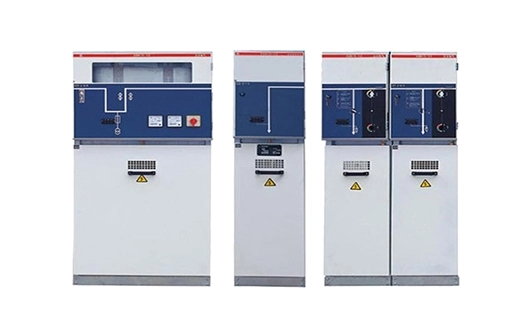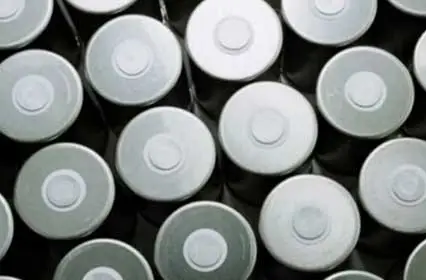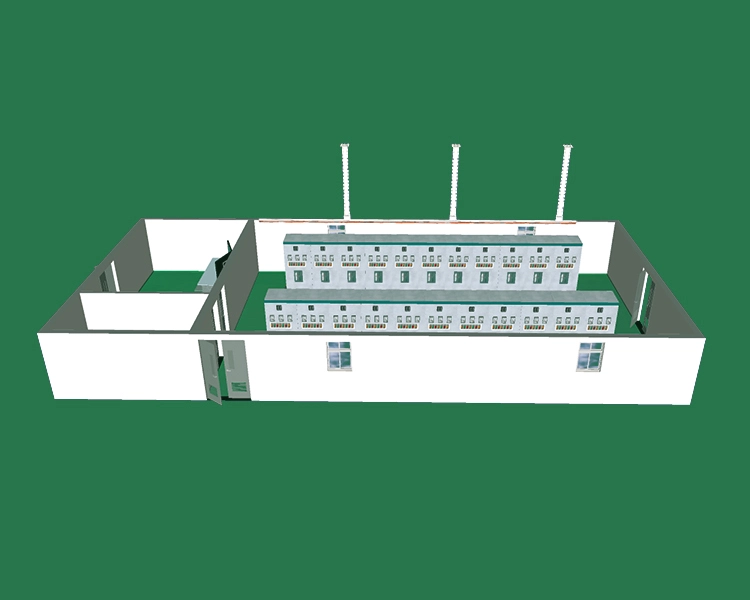en
+
The power system is an essential component of modern society’s infrastructure, with its primary task being the transportation of electrical energy from power plants to various users, ensuring the safety and stability of power supply. The power transmission lines, which act as the channel for power transmission, are responsible for transferring electrical energy from power stations to load centers. Among these transmission lines, conductors play a crucial role, directly affecting the efficiency, stability, and economic viability of electricity transmission. This article will explore the types, characteristics, selection, and applications of power lines and conductors in power systems.
1. Composition of Power Lines
Power lines are used for the transmission of electricity and typically consist of conductors, insulators, steel poles or towers, grounding devices, and other components. Depending on the method of power transmission and voltage level, power lines can be classified into different types. Common power lines include overhead lines and underground lines, with overhead lines being the most common form. These typically consist of conductors, supporting structures (such as steel towers or poles), and insulators. The conductor is one of the most important components in the power system, responsible for carrying the current, and it is also a key performance indicator for transmission lines.
2. Types of Power Conductors
There is a wide variety of conductors used in power systems, with the main types being:
1. Bare Conductors: Bare conductors are wires without an insulating layer, typically made of copper or aluminum. They are commonly used in low and medium-voltage overhead lines. Bare conductors have high electrical conductivity, simple structure, and easy installation. However, they are more susceptible to environmental factors (such as weather changes and pollution), requiring good maintenance.
2. Aluminum Conductors: Aluminum conductors are one of the most commonly used types in power lines. Aluminum is lightweight, has good electrical conductivity, and is highly resistant to corrosion, making it suitable for most overhead lines, especially in high-voltage and ultra-high-voltage transmission lines. The use of aluminum conductors makes transmission lines lighter and reduces construction and maintenance costs.
3. Aerial Bundled Conductors (ACSR): ACSR conductors are composite conductors made of steel wires and aluminum alloy wires. Steel wires are typically placed at the center to enhance the mechanical strength of the conductor, while the aluminum alloy wires are on the outer layer to conduct electricity. ACSR conductors combine the good electrical conductivity of aluminum with the high mechanical strength of steel, making them widely used in high-voltage and ultra-high-voltage transmission lines.
4. Aluminum Conductor Steel Reinforced (ACAR): ACAR conductors are made by combining aluminum alloy and steel materials. The aluminum alloy material on the outer layer provides good electrical conductivity, while the internal steel core enhances the mechanical strength of the conductor. ACAR conductors are suitable for long-distance, high-capacity power transmission, especially in high-altitude and complex terrain areas.
5. Copper Conductors: Copper conductors have high electrical conductivity and good stability. Although they are more expensive, they are still widely used in some applications that require high-quality power transmission. Copper conductors have strong oxidation resistance and can maintain good conductivity in high-temperature environments. However, due to the heavier weight of copper, they are typically used in medium- and low-voltage power lines.
6. Optical Fiber Composite Overhead Ground Wire (OPGW): OPGW is a type of conductor that integrates power transmission and communication functions. It contains optical fibers for high-speed data transmission and is commonly used in cross-border, cross-region high-voltage transmission lines. This conductor not only transmits power but also provides real-time data monitoring and communication support for power companies.
7. High-Temperature Superconducting Cables: High-temperature superconducting cables are one of the most promising types of conductors in the power industry. Since superconducting materials have virtually zero resistance at low temperatures, they can significantly improve the efficiency of power transmission. Although this technology has not been widely applied yet, with advancements in superconducting materials, it will play an important role in future power systems.
3. Selection of Power Conductors
When selecting power conductors, several factors need to be considered, primarily including:
1. Power Transmission Requirements: Based on the amount of power to be transmitted, voltage level, and distance, suitable conductors need to be selected. For long-distance transmission, conductors with high electrical conductivity and mechanical strength (such as ACSR) are usually chosen, while for short-distance, low-voltage transmission, bare aluminum conductors are sufficient.
2. Electrical Conductivity: The electrical conductivity of the conductor is a key factor in material selection. Typically, copper conductors offer the best conductivity but are more expensive; aluminum conductors are a good economic alternative; and ACSR conductors ensure both electrical conductivity and mechanical strength to meet the requirements of high-voltage lines.
3. Climate and Environmental Conditions: The corrosion resistance and tensile strength of conductors are critical in selecting power lines. For coastal, humid, or extreme cold environments, choosing aluminum alloy or composite conductors with better corrosion resistance is ideal. In high-temperature environments, copper conductors or high-temperature superconducting cables may be the best choice.
4. Economic Considerations: The cost of conductors is also an important factor in selection. For typical low-voltage and medium-voltage power systems, mid-range aluminum conductors or ACSR conductors are commonly selected. However, for long-distance, ultra-high-voltage transmission, despite the higher cost of the conductors, investing in highly conductive and strong conductors remains worthwhile considering the long-term transmission efficiency and equipment maintenance.
4. Installation and Maintenance of Power Conductors
The installation and maintenance of power conductors are crucial for ensuring the safe and reliable operation of power lines. The installation process typically includes line design, conductor erection, insulator installation, and testing. During installation, factors such as conductor tension, bending radius, and thermal expansion coefficient must be considered to ensure the conductor operates under various environmental conditions.
Maintenance involves regularly inspecting for wear, corrosion, breakage, or damage, as well as checking for changes in insulation performance. Over time, conductors may be affected by weather, wind, bird interactions, mechanical damage, and other external factors, so regular inspections and repairs are essential to ensure the continued safe operation of the power lines.




